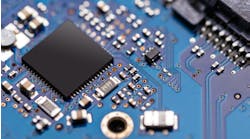Optimizing production through HMI and controller integration
In today's rapidly evolving manufacturing landscape, the surge in digital transformation and automation has created a growing need for seamless integration of human machine interface (HMI) software and controllers.
This article will explore the reasons, challenges, system considerations and the numerous benefits associated with this integration for various stakeholder groups.
Manufacturers continually seek to streamline operations, improve efficiency, reduce production costs, and fully maximize resources and capacity. Technological advances have enabled a tighter integration of the HMI and controller, with the controller providing manufacturers with a single source of data truth.
This integration extends to both HMI and controller applications. Consequently, companies are merging engineering teams and consolidating resources, as there is no longer a need for separate application development. Previously, application development for the HMI and controller involved importing tags, defining tag metadata, maintaining tag references throughout the HMI, and mapping the data tags to the controller.
See also: Podcast: Cybersecurity landscape and SEC rules for 2024
See also: Microsoft hack tests new SEC disclosure rules
This approach was labor-intensive and exposed systems to potential errors. Integration eliminates duplication, minimizes errors, and streamlines system design and programming, resulting in a simplified process and improved workflow that enhances business continuity and operational smoothness by unifying efforts.
On an operational front, alarm management plays a vital role in any control system. Integrated systems simplify alarm setup and maintenance in one location, reducing effort and risk. With alarms integrated into the controller, data remains steady even during communications loss, as integrated systems cache and recover alarms. Enabling remote operation of HMIs also enhances safety, reducing the risk of accidents.
Challenges of an integration
Technological advancements present their fair share of challenges, and the integration of HMIs and controllers within manufacturing is no exception.
One common challenge involves dealing with multiple vendor sources. Typically, manufacturing systems are made up of equipment and software from ranges of vendors with different sensors, controllers, and HMIs, making it challenging to achieve tight integration across several platforms.
Effective integration relies on the HMI and controller's ability to communicate using the same protocol. Compatibility issues may arise when older controllers lack support for modern protocols, presenting a significant challenge in bridging this technological generation gap.
Data mapping represents another obstacle, as the HMI must map its data tags to the controller's data points, which can be a complex process, particularly if the controller has numerous data points.
Operator-friendly HMIs a must
An important consideration lies in the user experience. The HMI must prioritize operator-friendliness, featuring well-designed screens, easily accessible controls, and clear and concise presentation of information. Localization for different languages and cultures is crucial.
This entails translating the text and graphics on the HMI into the appropriate language and ensuring the HMI can display different measurement units and date formats. A seamless and intuitive user interface is essential for optimizing operational efficiency; wherever possible, they take advantage of controller integration to collect and display data to the operator.
See also: Sustainability, traceability, visibility: New rules and tools for complex manufacturing
Security takes on paramount importance in HMI integration. To safeguard against unauthorized access, the HMI should incorporate user authentication and authorization features. Integrated security in a system, where user login credentials are used for both HMI access and controller maintenance, is critical. Regular updates and prompt application of security patches are imperative to maintain the HMI's security integrity.
Streamlining the deployment process
When manufacturers integrate the HMI with the controller in a system, it becomes crucial to understand how these essential components communicate and collaborate effectively. This involves asking critical questions:
- What will the operational workflow involve when using the integrated system
- What key considerations should inform the system's design?
- How should alarms be configured to optimize functionality?
- How should data tags be established within the system? Should this initiation occur within the controller and then be imported into the HMI?
- What information can be seamlessly shared or repurposed between the controller and the HMI to promote data cohesion?
- To what extent can these processes be efficiently automated?
When selecting an HMI for controller integration, it’s essential to choose one that aligns with the controllers' requirements in use. Ideally, the HMI and controllers should come from the same vendor to reduce the complexity of supporting diverse platforms and ensure harmonious operation.
However, if a single-vendor option is not feasible, selecting a technology-agnostic HMI allows for communication with any OEM product in the manufacturing system.
See also: Strategic savings: How distributed I/O reshapes plantwide costs
The HMI must also comprehend the functioning of each OEM product, discern the communication protocols in use, and advise on the need for supplementary drivers. If a specific driver for other equipment in the system isn’t available, the HMI should be capable of establishing communication via OPC UA, an open-source, cross-platform standard that simplifies data exchange from sensors to cloud applications.
By addressing these critical considerations, manufacturers can ensure the seamless integration of HMIs and controllers in a manner that aligns with their unique operational needs and preferences.
Realizing stakeholder benefits through integration
Upon successfully integrating the HMI and controller, manufacturers can unlock a range of benefits that cater to various stakeholders involved in the process. For example, design engineers experience enhanced efficiency as tightly integrated systems streamline the design process. They can set up data in the controller just once, with the HMI seamlessly and directly interacting with the controller data, eliminating configuration duplication and the associated risk of errors.
For the workforce on the operational side, simplification is pivotal. A tightly integrated system simplifies their tasks, reducing the learning curve and the need for maintenance. This single-platform approach significantly eases training for both existing and future employees, enhancing productivity and freeing up capacity for higher-value tasks.
See also: Tailoring OT-IT convergence for enhanced data access, management
During production, the benefits of maintaining and troubleshooting integrated systems become clear. HMIs provide a user-friendly graphical interface, enhancing machine operation intuitiveness. Operators can monitor machine status, adjust parameters, and troubleshoot from a centralized location.
Working with a single-source vendor expedites support and issue resolution, reducing complexity. Language switching caters to operators, presenting metadata in their preferred language, ensuring consistency and confidence while reducing errors. Informed decisions based on accurate and timely data improve business accuracy and outcomes.
See also: Production planning: How AI can help meet every delivery deadline
A single source of automation system equipment and software provides a significant advantage for purchasing departments. Working with a single company simplifies their processes, optimizes costs, and reduces the complexities associated with managing multiple vendors.
In essence, the integration of HMIs and controllers fosters harmony among stakeholders, offering efficiency, ease of use, and consistency. These collective benefits ultimately enhance productivity, minimize errors, and optimize decision-making processes, reinforcing the value of tightly integrated systems in the manufacturing realm.
Integrated HMI software and controllers represents a significant step in manufacturing optimization, offering efficiency, accuracy, and cost benefits.
See also: ‘Operational’ twins should rise in their use in 2024
For manufacturers aiming to retain either the existing controller or HMI while integrating the other component, openness and the depth of integration take on crucial roles. The chosen solution must align with the requirements of design, maintenance, and operations staff, addressing the organization's specific needs.
The system's ability to extract diagnostic information from connected devices depends on integrating as much data as possible within the controller. The ultimate objective is to achieve a seamless system in terms of design, troubleshooting, maintenance, and operational performance.
Looking ahead, considering the recent hardware supply chain challenges, diversifying sources for certain hardware components represents a prudent strategy to avoid overreliance on a single vendor. However, the increasing demand for tighter integration in manufacturing compels manufacturers to carefully assess their options, considering the long-term landscape.
A judicious evaluation of integration possibilities and hardware sourcing strategies will play a key role in effectively navigating the ever-evolving manufacturing landscape.




